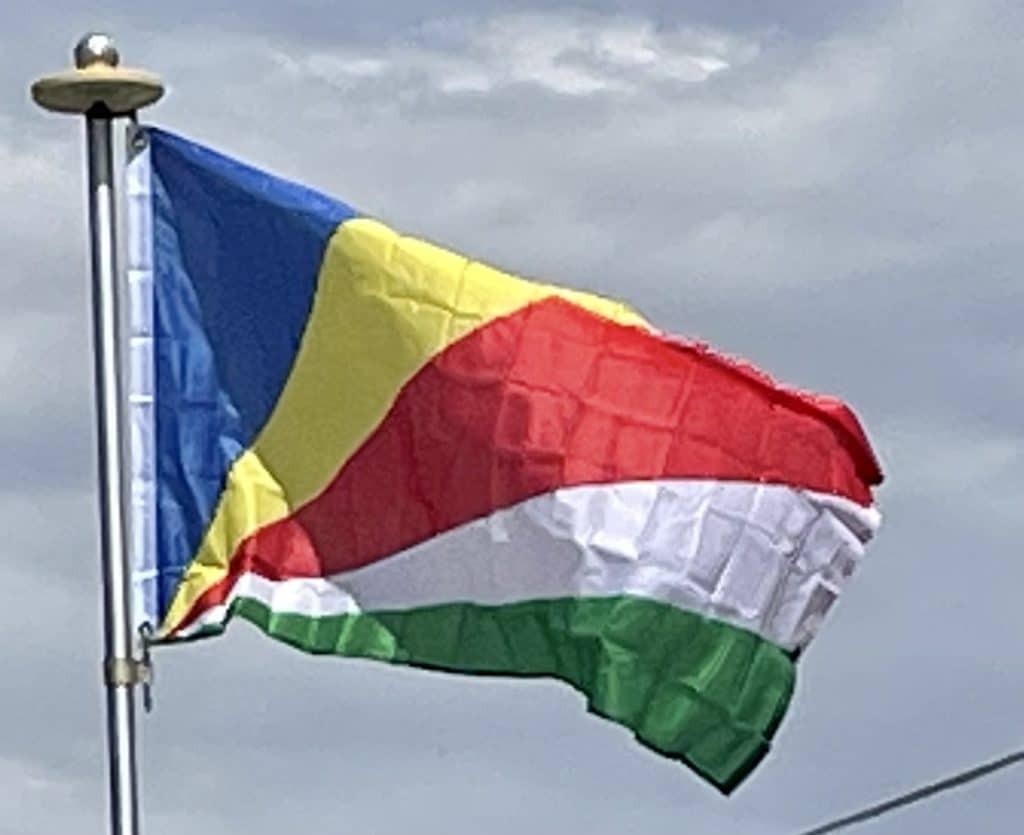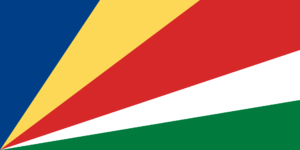The islands are divided into groups as follows.
There are 42 granitic islands known as the Granitic Seychelles.
There are two coral sand cays north of the granitics on the edge of the Seychelles Bank: Denis and Bird.
There are two coral islands south of the Granitics: Coëtivy and Platte.
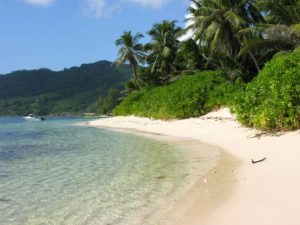
There are 29 coral islands in the Amirantes group, west of the granitics.
There are 13 coral islands in the Farquhar Group, south-southwest of the Amirantes.
There are 67 raised coral islands in the Aldabra Group, west of the Farquhar Group:
In addition to these 155 islands as per the Constitution of Seychelles there are 7 reclaimed islands.
Economy:
During the plantation era, cinnamon, vanilla and copra were the chief exports. In 1965, during a three-month visit to the islands, futurist Donald Prell prepared for the then-crown colony Governor General an economic report containing a scenario for the future of the economy. Quoting from his report, in the 1960s, about 33% of the working population worked at plantations, and 20% worked in the public or government sector. The Indian Ocean Tracking Station on Mahé used by the Air Force Satellite Control Network was closed in August 1996 after the Seychelles government attempted to raise the rent to more than $10,000,000 per year.
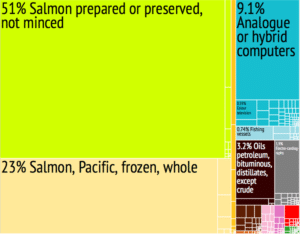
Since independence in 1976, per capita output has expanded to roughly seven times the old near-subsistence level. Growth has been led by the tourist sector, which employs about 30% of the labor force, compared to agriculture which today employs about 3% of the labor force. Despite the growth of tourism, farming and fishing continue to employ some people, as do industries that process coconuts and vanilla.
The prime agricultural products currently produced in Seychelles include sweet potatoes, vanilla, coconuts and cinnamon. These products provide much of the economic support of the locals. Frozen and canned fish, copra, cinnamon and vanilla are the main export commodities.
Transportation:
There are a number of modes of transport in Seychelles. Seychelles possesses transportation systems that include 453km of roads (of which 400km are paved), seaports, and airports. The country lacks railways. The main seaport is Victoria, and Seychelles has no merchant marine. There are fourteen airports in Seychelles, the major ones including Seychelles International Airport and Praslin Island Airport.
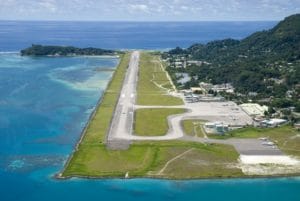
Of the fourteen airports, six have runways that are paved.
In rural areas, especially on La Digue, a popular way of public transport is by using ox-carts.
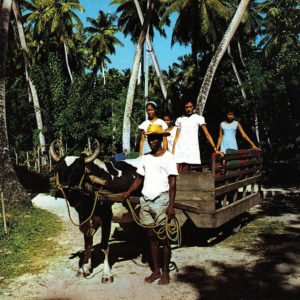
Flag of the Seychelles:
The flag of Seychelles was adopted on January 8, 1996. The current flag is the third used by the country since its independence from Britain on June 29, 1976. The colors used in the current flag are the official colors of two of the nation’s major political parties: the Seychelles People’s United Party and the Seychelles Democratic Party.
The flag consists of five different colored bands (blue, yellow, red, white, and green) starting from one end and diverging towards the other end. The oblique bands symbolize a dynamic new country moving into the future. The color blue depicts the sky and the sea that surrounds the Seychelles. Yellow is for the sun which gives light and life, red symbolizes the people and their determination to work for the future in unity and love, while the white band represents social justice and harmony. The green depicts the land and natural environment.
